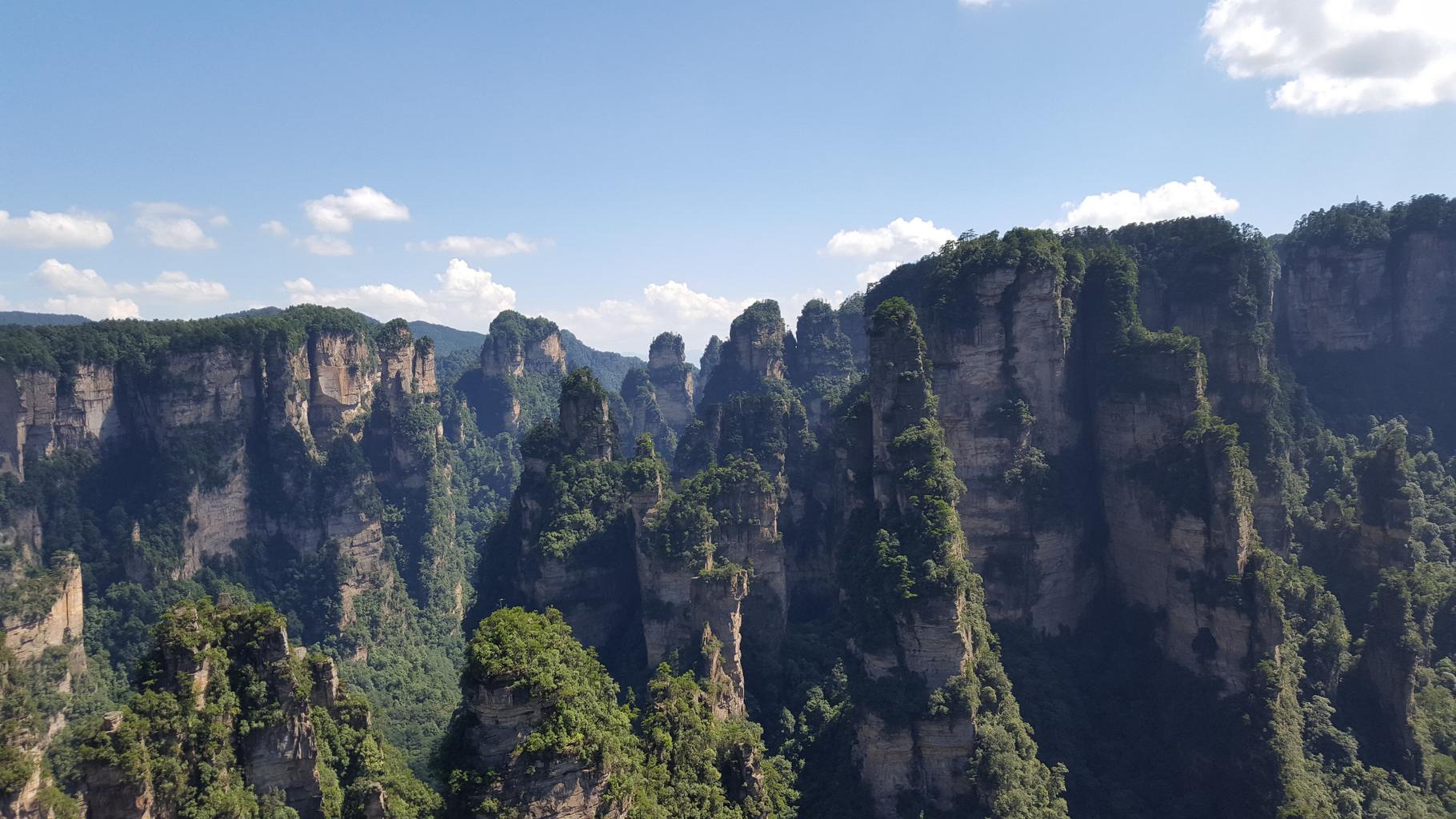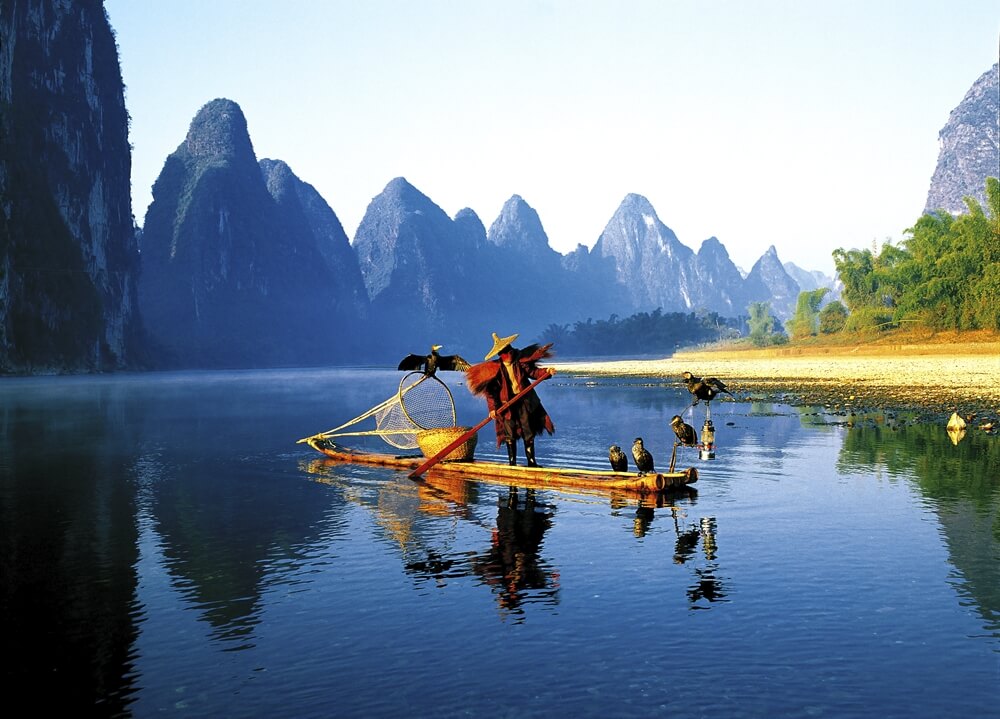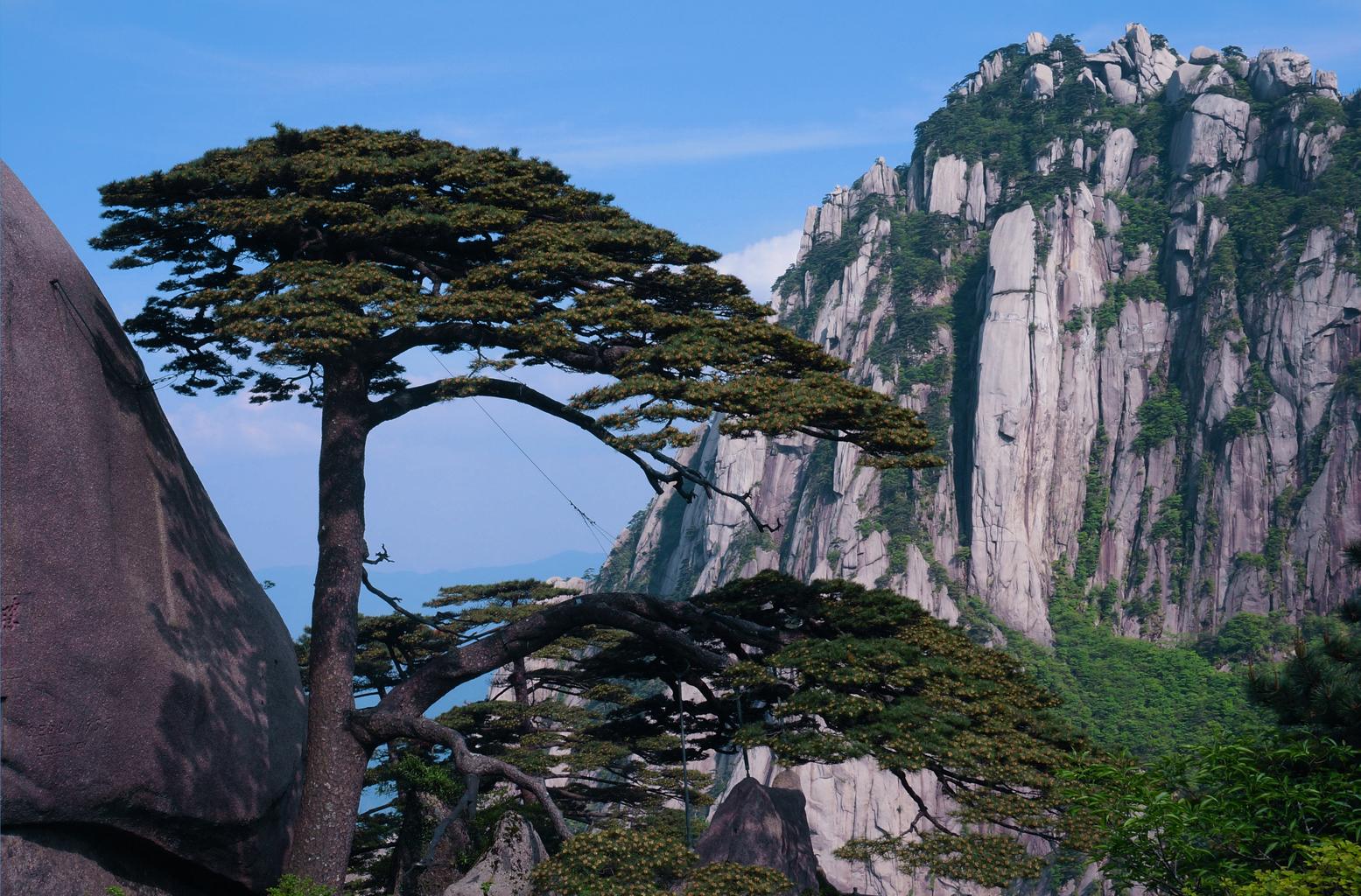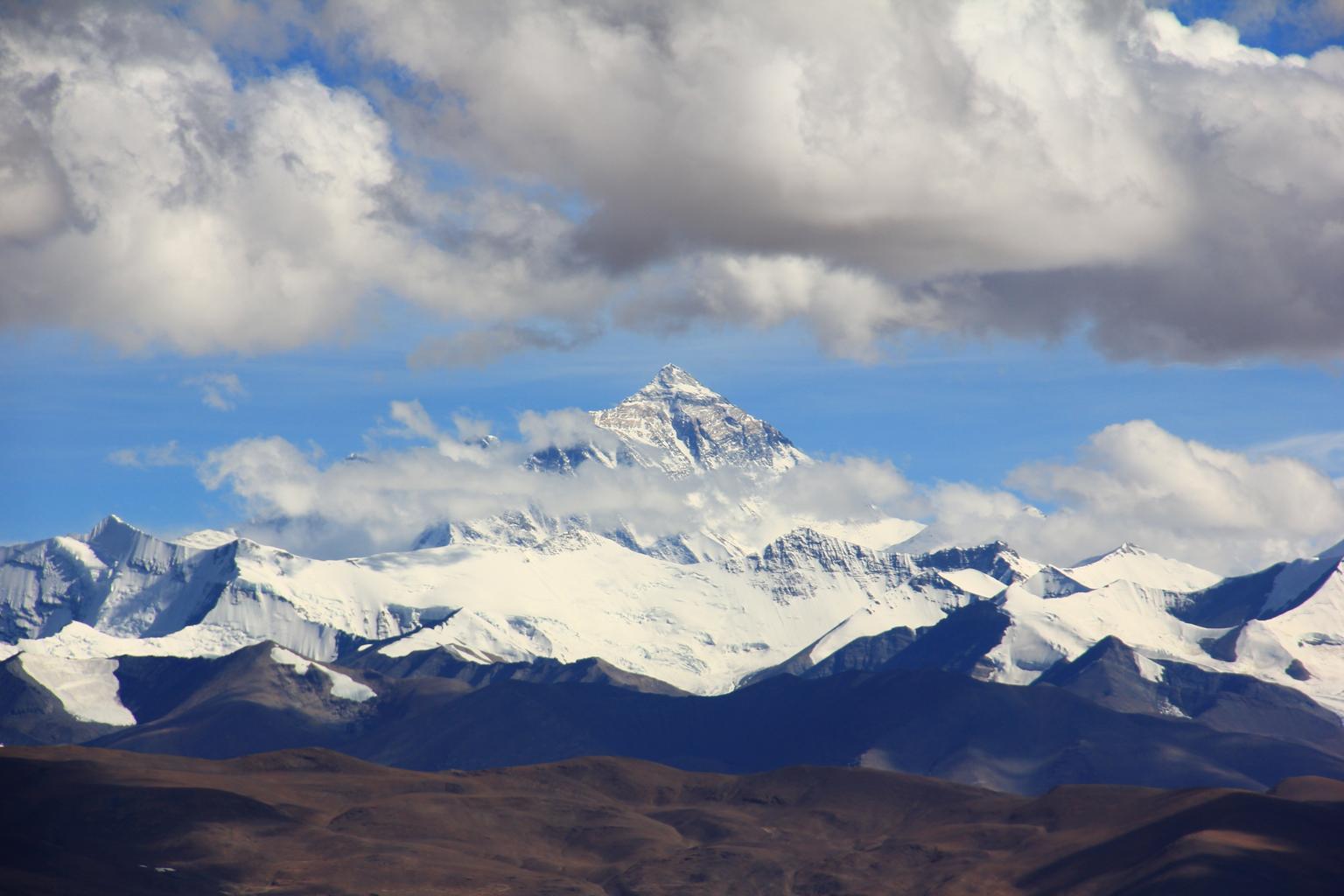Traveling to China has become even easier with the latest visa policy updates, including the 144-hour visa-free transit. This policy allows travelers from certain countries to visit some of China’s most popular regions for up to six days without needing a visa, making it easier than ever to experience the country’s natural wonders.
However, China is a vast country with a rich history that offers an array of fascinating natural landscapes and a sparkling culture. From towering mountains to serene rivers, picturesque deserts to lush grasslands, it may not be easy to choose a suitable stopover from the many attractive destinations, especially for first-time visitors.
In this article, we’ll explore 20 of China’s most beautiful natural places, highlighting what makes them unique and what makes them a must-visit destination. We’ll also answer common China travel-related questions to help you plan your trip and get the most out of your experience.
Find affordable and private CHINA TOUR PACKAGES
What is the Most Beautiful Place in China?
Choosing the most beautiful place in China is no easy task, as the country is home to numerous stunning landscapes, each with its unique charm. However, we have curated a list of 20 natural places that stand out for their beauty and splendor. Whether you are a nature enthusiast, a photographer, or just looking for a peaceful escape, these destinations will leave you in awe.
1. Zhangjiajie National Forest Park, Hunan
The inspiration for the floating Hallelujah Mountains in Avatar.
Zhangjiajie National Forest Park is famous for its towering sandstone pillars, which served as the inspiration for the floating mountains in the movie “Avatar”. This park, located in Hunan Province, is part of the larger Wulingyuan Scenic Area, a UNESCO World Heritage site.
The park’s most notable feature is the 3,000 quartz-sandstone pillars and peaks, many of which are over 200 meters high. The best way to experience Zhangjiajie is by walking along the glass bridge, which spans a deep canyon and offers stunning views of the pillars below. The park also features a variety of hiking trails, cable cars, and the world’s longest and highest glass bridge, the Zhangjiajie Grand Canyon Glass Bridge.
Tours4fun recommendations:
2. Guilin and Yangshuo, Guangxi
A landscape of poetic beauty and karst mountains.
The karst landscapes of Guilin and Yangshuo are some of the most picturesque in China. The Li River, winding through the region, is flanked by dramatic limestone peaks and lush greenery. A boat cruise on the Li River offers spectacular views of the scenery, and the surrounding countryside is perfect for cycling and hiking. The charming town of Yangshuo is a great base for exploring the area’s natural beauty.
In Guilin, the Reed Flute Cave and Elephant Trunk Hill are must-visit attractions. The Reed Flute Cave features impressive stalactites and stalagmites illuminated by colorful lights, while Elephant Trunk Hill, shaped like an elephant drinking water, is an iconic symbol of Guilin. In Yangshuo, the countryside offers endless opportunities for outdoor activities, such as rock climbing, bamboo rafting, and hot air ballooning.
Tours4fun recommendations:
3. Jiuzhaigou Valley, Sichuan
A fairyland of colorful lakes and waterfalls.
Jiuzhaigou Valley, located in Sichuan Province, is a UNESCO World Heritage site renowned for its colorful lakes, lush forests, and cascading waterfalls. The valley’s name translates to “Nine Village Valley,” reflecting its history as the home of nine Tibetan villages. The highlight of Jiuzhaigou is its crystal-clear lakes that change colors with the seasons, creating a surreal landscape.
Visitors can explore the valley through well-maintained boardwalks and hiking trails, offering views of iconic sites like the Five Flower Lake and Nuorilang Waterfall. The unique karst formations and diverse flora and fauna make Jiuzhaigou a paradise for nature enthusiasts and photographers.
4.The Great Wall of China, Beijing
An ancient marvel winding through rugged mountains and offering panoramic views.
The Great Wall of China, stretching over 13,000 miles, is one of the most iconic landmarks in the world. The section near Beijing, particularly around Mutianyu and Jinshanling, offers some of the most beautiful scenery, with the wall winding through rugged mountains and lush forests. Hiking along the Great Wall provides a unique perspective of this ancient marvel and the breathtaking landscapes it traverses.
Mutianyu is known for its well-preserved wall and watchtowers, making it a popular spot for tourists. Jinshanling, on the other hand, offers a more rugged and less crowded experience, with sections of the wall in their original, unrestored state. Both areas provide opportunities for photography, exploration, and a deeper understanding of the historical significance of the Great Wall.
Tours4fun recommendations:
5. Huangshan (Yellow Mountains), Anhui
Majestic peaks shrouded in mist and ancient pine trees.
Huangshan, also known as the Yellow Mountains, is one of China’s most famous mountain ranges. Located in Anhui Province, Huangshan is renowned for its stunning scenery, characterized by granite peaks, ancient pine trees, hot springs, and seas of cloud.
The mountains have inspired countless artists and poets throughout Chinese history. The best way to explore Huangshan is by taking the cable car up to the top and then hiking along the well-maintained trails. Key highlights include the Sunrise at the Refreshing Terrace, the Sea of Clouds at the North Sea, and the bizarre rock formations such as the Flying-Over Rock and the Monkey Gazing at the Sea.
Tours4fun recommendations:
6. Mount Everest, Tibet
The highest peak in the world, standing tall at 8,848 meters.
Mount Everest, known as Qomolangma in Tibetan, is the highest peak in the world, standing at 8,848 meters (29,029 feet). The mountain attracts climbers and adventurers from around the globe, but you don’t have to be a mountaineer to appreciate its beauty. The North Base Camp in Tibet offers stunning views of the peak and is accessible to tourists. The journey to the base camp is an adventure in itself, passing through remote Tibetan villages and dramatic landscapes.
For those who prefer a less strenuous experience, there are various viewpoints and monasteries around the base camp that offer incredible views of Everest. The Rongbuk Monastery, the highest monastery in the world, provides a unique vantage point and a chance to learn about the local Tibetan culture. Visiting Mount Everest is a once-in-a-lifetime experience that leaves a lasting impression on all who make the journey.
Tours4fun recommendations:
7. Zhangye Danxia Landform, Gansu
A colorful masterpiece of layered rock formations.
Zhangye Danxia Landform, located in Gansu Province, is famous for its vibrant, multicolored rock formations. Often referred to as the “Rainbow Mountains”, this natural wonder was formed by the erosion of red sandstone, creating a striking landscape of vivid hues.
Visitors can explore the area through a series of boardwalks and viewing platforms, which offer panoramic views of the colorful mountains. The best time to visit is at sunrise or sunset when the colors are most intense.
8. Kanas Lake, Xinjiang
A pristine alpine lake surrounded by lush forests and snow-capped mountains.
Kanas Lake, located in the Altay Mountains of Xinjiang, is a pristine alpine lake known for its clear turquoise waters and stunning natural scenery. The lake is surrounded by lush forests, meadows, and snow-capped peaks, creating a picturesque and tranquil environment. The area is also home to several ethnic minority groups, including the Kazakhs and Tuvans, who maintain their traditional way of life.
The lake’s name, “Kanas”, means “beautiful and mysterious” in the local language, reflecting its enchanting beauty. The best time to visit is in the autumn when the surrounding forests are ablaze with fall colors. The area offers numerous outdoor activities, such as hiking, horseback riding, and fishing, allowing visitors to fully immerse themselves in the natural beauty of the region.
9. Lugu Lake, Yunnan-Sichuan Border
A serene lake surrounded by mountains and home to the Mosuo people.
Lugu Lake, located on the border between Yunnan and Sichuan provinces, is a serene alpine lake known for its clear blue waters and stunning mountain scenery. The lake is also home to the Mosuo people, one of the last matriarchal societies in the world. Visitors can explore the lake by boat, hike the surrounding hills, and learn about the unique culture and traditions of the Mosuo people.
The lake’s tranquil environment and picturesque landscapes make it a perfect destination for relaxation and nature appreciation. Several islands dot the lake, each with its unique features and legends. The largest island, Heiwawu Island, is home to a Buddhist temple and offers panoramic views of the lake and surrounding mountains. The Mosuo villages around the lake provide a glimpse into the traditional way of life, with their unique customs and matriarchal society.
10. Shangri-La, Yunnan
A mystical land with stunning landscapes, Tibetan culture, and a gateway to the Himalayas.
Shangri-La, located in the northwest of Yunnan Province, is a place of stunning natural beauty and rich Tibetan culture. Known historically as Zhongdian, the town was renamed Shangri-La in 2001 to reflect its legendary status as a mystical paradise described in James Hilton’s novel Lost Horizon. Nestled at an altitude of over 3,000 meters, Shangri-La serves as a gateway to the Tibetan Plateau and the Himalayas, offering breathtaking landscapes and unique cultural experiences.
The area is home to the famous Potatso National Park, which features pristine lakes, lush meadows, and dense forests. Shudu Lake and Bita Lake, within the park, are particularly picturesque and provide opportunities for hiking, boating, and wildlife spotting. The region is also dotted with traditional Tibetan villages, where visitors can experience the local way of life, visit monasteries, and participate in cultural festivals.
One of the highlights of Shangri-La is the Songzanlin Monastery, the largest Tibetan Buddhist monastery in Yunnan. This architectural marvel, often referred to as the “Little Potala Palace,” offers insights into Tibetan Buddhism and provides stunning views of the surrounding landscape.
11. Tiger Leaping Gorge, Yunnan
One of the deepest gorges in the world, offering spectacular views and thrilling hikes.
Tiger Leaping Gorge, located in Yunnan Province, is one of the deepest gorges in the world, with a depth of about 3,790 meters (12,434 feet). The gorge is carved by the Jinsha River, a primary tributary of the Yangtze River, and offers some of the most spectacular hiking trails in China.
The trek through Tiger Leaping Gorge takes you along narrow paths with sheer drops, offering breathtaking views of the river and the surrounding mountains. The hike is challenging but rewarding, with highlights including the Middle Gorge, where you can see the powerful river up close, and the stunning views from the high trail.
The legend behind the name “Tiger Leaping Gorge” tells of a tiger that leaped across the narrowest point of the river to escape a hunter. The gorge is divided into three sections: Upper, Middle, and Lower Gorge, each with its unique features. The Middle Gorge is known for its roaring rapids and the famous “Tiger Leaping Rock”. Visitors can stay in guesthouses along the trail, providing comfortable accommodation and stunning views.
12. Mount Tai, Shandong
A sacred mountain with ancient temples and breathtaking views.
Mount Tai, located in Shandong Province, is one of China’s most sacred mountains, with a history of religious worship spanning over 3,000 years. The mountain is dotted with ancient temples, stone inscriptions, and scenic spots, making it a popular pilgrimage site.
The best way to experience Mount Tai is by climbing the 6,000 steps to the summit, where you can enjoy panoramic views of the surrounding landscape. Key highlights include the Temple of the Jade Emperor, the South Gate to Heaven, and the Sunrise at the East Peak. The mountain’s cultural significance and natural beauty make it a must-visit destination in China.
13. Mount Emei, Sichuan
A spiritual journey through misty peaks and ancient temples.
Mount Emei, located in Sichuan Province, is one of the Four Sacred Buddhist Mountains of China and a UNESCO World Heritage Site. The mountain is home to several ancient temples and monasteries, as well as diverse flora and fauna. Climbing Mount Emei involves passing through dense forests, steep cliffs, and scenic spots, with the Golden Summit offering breathtaking views of the surrounding landscape.
The mountain’s spiritual significance and natural beauty have attracted pilgrims and tourists for centuries. The Baoguo Temple, located at the foot of the mountain, is a major starting point for the ascent, while the Wannian Temple, with its ancient architectural style and historical relics, is another key attraction. The diverse wildlife on the mountain includes several rare and endangered species, adding to the area’s ecological importance.
14. Qinghai Lake, Qinghai
The largest saltwater lake in China, surrounded by stunning landscapes.
Qinghai Lake, located in Qinghai Province, is the largest saltwater lake in China, covering an area of 4,317 square kilometers (1,667 square miles). The lake’s azure waters, surrounded by vast grasslands and snow-capped mountains, create a stunning and tranquil landscape. The area is also an important habitat for numerous bird species, making it a popular destination for bird-watching. Cycling around the lake is a popular activity, offering breathtaking views and a chance to explore the local Tibetan culture.
The lake is especially beautiful in summer when the surrounding grasslands are covered with wildflowers, creating a vibrant and colorful scene. Several Tibetan monasteries and villages are located around the lake, providing cultural and historical insights. The Bird Island, located on the western shore of the lake, is a renowned bird sanctuary, attracting thousands of migratory birds each year.
15. Mount Wuyi, Fujian
A UNESCO World Heritage site with stunning landscapes and ancient tea culture.
Mount Wuyi, located in Fujian Province, is a UNESCO World Heritage Site known for its stunning peaks, serene valleys, and ancient tea traditions. The area is famous for its unique rock formations, clear streams, and lush forests. The traditional tea culture of the region, particularly the famous Wuyi rock tea, adds to the area’s charm. Visitors can explore the scenic area by hiking, rafting, and visiting ancient temples and tea plantations.
The Nine Bend River, winding through the mountains, offers a serene and picturesque setting for bamboo rafting. The Dahongpao Scenic Area, home to the famous Dahongpao tea bushes, provides an opportunity to learn about the local tea culture and history. The ancient temples and shrines, such as the Wuyi Palace and the Tianyou Peak, offer spiritual and historical insights into the region.
16. Yalong Bay, Hainan
A tropical paradise with crystal-clear waters and white sandy beaches.
Yalong Bay, located on Hainan Island, is often referred to as the “Hawaii of China”. The bay’s crystal-clear waters, white sandy beaches, and swaying palm trees create a perfect tropical paradise. It’s a popular destination for water sports, sunbathing, and relaxing by the beach. The area’s luxury resorts and vibrant nightlife also make it a great destination for a beach vacation.
The underwater world of Yalong Bay is just as stunning as its surface, with vibrant coral reefs and diverse marine life making it a popular spot for snorkeling and diving. The bay is also home to several high-end resorts that offer world-class amenities and services, providing a luxurious and relaxing experience for visitors.
17. Yading Nature Reserve, Sichuan
A pristine and remote paradise with snow-capped peaks, clear lakes, and lush meadows.
Yading Nature Reserve, located in Sichuan Province, is a pristine and remote paradise known for its snow-capped peaks, clear lakes, and lush meadows. The reserve is often referred to as the “last Shangri-La” due to its untouched and serene environment. The three sacred peaks of Chenresig, Jambeyang, and Chanadorje are the main attractions, and the area is ideal for hiking, photography, and experiencing nature’s tranquility.
The reserve’s diverse ecosystems support a wide range of flora and fauna, making it a haven for nature enthusiasts. The Pearl Lake and the Milk Lake, with their crystal-clear waters, are among the most beautiful spots in the reserve. The traditional Tibetan culture and the simple, unspoiled beauty of the landscape make Yading a truly unique and unforgettable destination.
18. Huangguoshu Waterfall, Guizhou
One of Asia’s largest waterfalls, surrounded by lush greenery and unique karst formations.
Huangguoshu Waterfall, located in Guizhou Province, is one of Asia’s largest and most spectacular waterfalls. Standing at 77.8 meters high and 101 meters wide, this majestic waterfall is part of the Huangguoshu Waterfall National Park, a beautiful area that offers a variety of scenic spots and natural wonders. The waterfall is particularly impressive during the rainy season when the water flow is at its peak, creating a thunderous roar and a mesmerizing mist.
Visitors can explore several viewing platforms to experience the waterfall from different perspectives, including the Water-Curtain Cave located behind the falls. This unique feature allows you to see the waterfall from behind the cascading water, offering a truly immersive experience. The surrounding park is rich with lush greenery, karst formations, and other smaller waterfalls, making it an ideal destination for nature enthusiasts.
19. Enshi Grand Canyon, Hubei
A lesser-known natural wonder with dramatic cliffs, waterfalls, and lush greenery.
Enshi Grand Canyon, located in Hubei Province, is a lesser-known natural wonder featuring dramatic cliffs, waterfalls, and lush greenery. The canyon stretches for over 100 kilometers, offering breathtaking views and a variety of outdoor activities. The area’s unique karst landscape, combined with its rich biodiversity, makes it a fascinating destination for nature enthusiasts.
Hiking through the canyon is a popular activity, with trails leading to scenic spots such as the Yunlong River Valley, the One Incense Pillar, and the Lovers’ Bridge. The Qingjiang River, which flows through the canyon, offers opportunities for rafting and boat tours, providing a different perspective of the stunning scenery. The area’s pristine environment and diverse flora and fauna make it a haven for wildlife and plant species.
20. Hulunbuir Grassland, Inner Mongolia
Expansive grasslands with rolling hills, rivers, and traditional Mongolian culture.
Hulunbuir Grassland, located in Inner Mongolia, is one of the most beautiful and expansive grasslands in China. Covering an area of over 100,000 square kilometers, it features rolling hills, meandering rivers, and a rich diversity of flora and fauna. The grassland is particularly stunning in the summer, when the fields are lush and green, dotted with colorful wildflowers.
The area is home to the nomadic Mongolian people, whose traditional yurts and herds of livestock add to the cultural richness of the landscape. Visitors can experience traditional Mongolian hospitality, enjoy horseback riding, and participate in local festivals. The nearby Hulun Lake, one of the largest freshwater lakes in China, offers opportunities for boating and birdwatching, further enhancing the appeal of this beautiful destination.
China Travel FAQs
How to get a visa for China?
To visit China, you’ll need to apply for a visa at a Chinese embassy or consulate. The most common type of visa for tourists is the L visa. You will need to provide your passport, a completed visa application form, a recent passport-sized photo, etc. You can check the detailed Visa types and requirements here.
It’s recommended to apply for the visa at least a month before your planned departure.
Which part of China should I visit?
The best part of China to visit depends on your interests. For natural beauty, consider visiting places like Jiuzhaigou Valley, Zhangjiajie National Forest Park, and Guilin. If you’re interested in history and culture, Beijing, Xi’an, and Shanghai offer numerous historical sites and cultural experiences.
Is it safe for American tourists to go to China?
China is generally safe for tourists, including American visitors. The country has a low crime rate, and violent crime against foreigners is rare. However, it’s important to take standard travel precautions, such as being aware of your surroundings, keeping your belongings secure, and avoiding unlicensed taxis or unofficial tours.
When is the best time to visit China?
The best time to visit China depends on the regions you plan to explore. Generally, spring (April to June) and autumn (September to October) offer the most pleasant weather across most of the country. These seasons provide comfortable temperatures and less rainfall, making it ideal for sightseeing and outdoor activities. However, some destinations have their own peak seasons. For instance, the best time to visit the rice terraces in Guangxi is during the spring planting season, while the desert regions of Inner Mongolia and Xinjiang are best visited in late spring and early autumn to avoid extreme temperatures.
What are some travel tips for visiting China?
Language: While English is spoken in major tourist areas, learning a few basic Mandarin phrases can be helpful.
Currency: The official currency is the Chinese Yuan (CNY or RMB). Credit cards are widely accepted in cities, but it’s good to have cash for rural areas.
Internet: Access to certain websites and apps is restricted. Consider using a VPN if you need access to these services.
Transport: China has an extensive public transport network, including high-speed trains and domestic flights. It’s advisable to book tickets in advance, especially during peak travel seasons.
Cultural Sensitivity: Respect local customs and traditions. Dress modestly when visiting religious sites and be mindful of social norms.

 Find affordable and private
Find affordable and private 
























There are no comments.